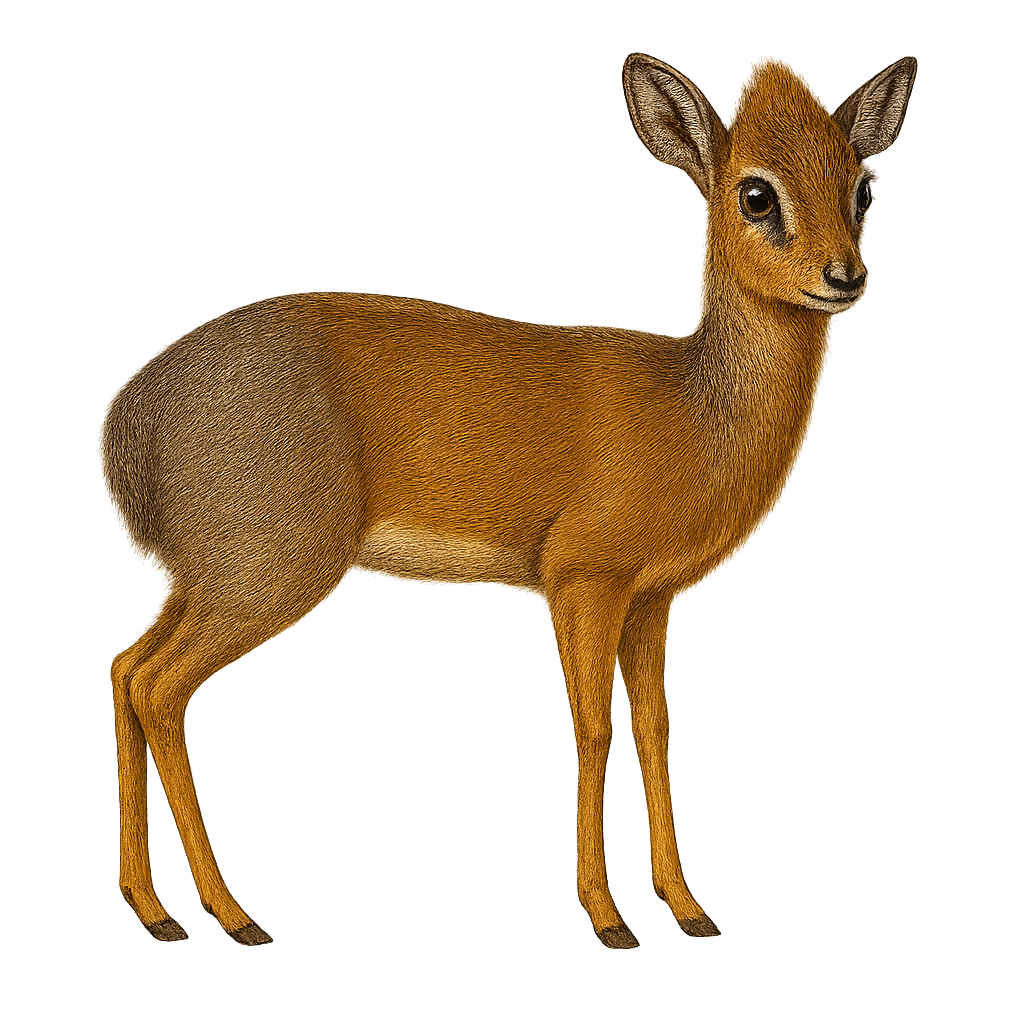Your wildlife photography guide.
Explore the cavendish's dik-dik in detail, study its behavior, prepare your shots.
Where to observe and photograph the cavendish's dik-dik in the wild
Learn where and when to spot the cavendish's dik-dik in the wild, how to identify the species based on distinctive features, and what natural environments it inhabits. The WildlifePhotographer app offers tailored photography tips that reflect the cavendish's dik-dik’s behavior, helping you capture better wildlife images. Explore the full species profile for key information including description, habitat, active periods, and approach techniques.
Cavendish’s Dik-dik
Scientific name: Madoqua cavendish

IUCN Status: Least Concern
Family: BOVIDAE
Group: Mammals
Sensitivity to human approach: Suspicious
Minimum approach distance: 30 m
Rut period: May to July
Gestation: 170-180 jours
Births: October to December
Habitat:
Coastal shrubs and open savannas
Activity period :
Active at dawn and dusk, ideal moments for observation.
Identification and description:
The Cavendish Dik-dik is a small antelope found mainly in the semi-arid zones and savannas of East Africa. It stands about 40 cm tall at the shoulder, with a body length of 60 to 70 cm, and weighs between 3 and 6 kg. This small herbivore is easily recognized by its compact size, sharp muzzle, and bright eyes. Its coat is typically gray-brown, with lighter shades on the belly and distinct markings around the eyes, giving it an alert expression. The Cavendish Dik-dik is a discreet animal, often seen alone or in small family groups, preferring to avoid large human concentrations. It primarily feeds on herbaceous plants, fruits, seeds, and leaves. Its small size allows it to slip easily through bushes and tall grasses to escape predators. While the species is not currently endangered, it is vulnerable to habitat loss and pressures from human activities.
Recommended lens:
400 mm – adjust based on distance, desired framing (portrait or habitat), and approach conditions.
Photography tips:
Approach slowly and discreetly, using a telephoto lens to avoid disturbing the dik-dik, a small, elusive animal that can easily move away if disturbed.
Photograph early in the morning or late in the afternoon, when the soft light makes the dik-dik more active, often searching for food in bushes or shrubland.
Capture moments of natural behavior: The dik-dik is often seen alone or in pairs, feeding or moving stealthily through the grass. These moments offer great opportunities for dynamic photos.
Be patient and respectful: The dik-dik is discreet and can be hard to spot. Wait for moments when it is more visible without disturbing its activity.
Cavendish's dik-dik is a species of minor concern, but it is important to respect its natural habitat and minimize disturbances, especially during its feeding and breeding periods. Follow local conservation rules to preserve this species and its environment.
The WildlifePhotographer App is coming soon!
Be the first to explore the best nature spots, track rutting seasons, log your observations, and observe more wildlife.
Already 1 439 wildlife lovers subscribed worldwide

